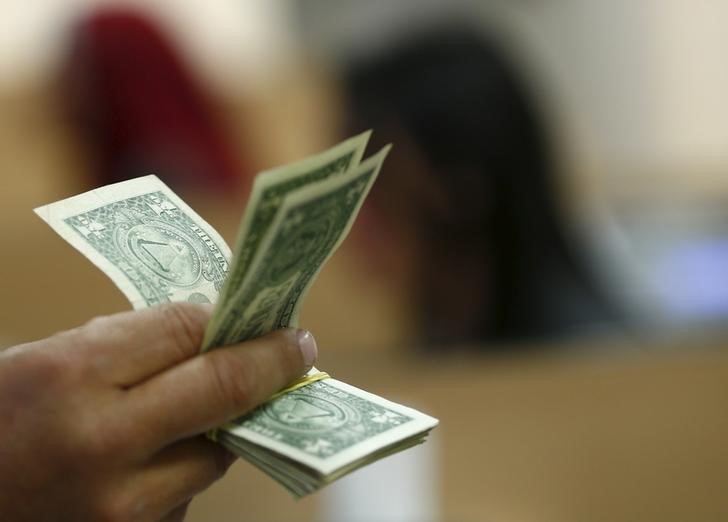Lisa Cook sues Trump over firing attempt, emergency hearing set
Investing.com - The U.S. dollar fell Friday, heading for a weekly loss as traders remained on edge over U.S. trade tariffs as well as moves from U.S. President Donald Trump to extend his influence on the Federal Reserve.
At 04:20 ET (08:20 GMT), the Dollar Index, which tracks the greenback against a basket of six other currencies, traded 0.3% lower to 97.957, on track for a weekly loss of around 1%.
Miran to serve on Fed board
Trump’s trade tariffs took effect from Thursday, with regional economies facing between 10% to 50% levies on their U.S. exports. While a bulk of the imposed levies were telegraphed by the U.S. president, the dollar has been on the slide on concerns about their impact on the world’s largest economy.
Last week saw the release of a disappointing jobs report, and this week has seen weak U.S. services sector activity as well as an increase in initial jobless claims.
Traders are pricing in an over 90% chance of a Fed cut in September, up from around a 50-50 chance a week ago.
Also weighing on the U.S. currency are worries over the independence of the Federal Reserve.
Trump on Thursday picked Stephen Miran, the chairman of the Council of Economic Advisers, to serve out the final few months of an open spot on the Fed Board, following Fed Governor Adriana Kugler’s surprise resignation last week.
“Miran has echoed Trump’s dovish calls and Fed criticism of late, as well as downplaying the inflationary impact of tariffs,” said analysts at ING, in a note. “He’s widely expected to join Christopher Waller and Michelle Bowman in the dovish camp for the few meetings he will attend, with a non-negligible risk he might try to build consensus for a 50bp move.”
This is an interim move, but would likely increase Trump’s influence over the central bank as the White House continues to search for a successor to Fed Chair Jerome Powell, whose term ends May 15, 2026.
Bloomberg News reported on Thursday that Fed Governor Christopher Waller is emerging as a top candidate to be the central bank’s next chair.
Euro helped by Ukraine peace talks
In Europe, EUR/USD slipped slightly lower to 1.1662, just below a more than one-week high as investors welcomed talks in search of a breakthrough to end the war in Ukraine.
Russian President Vladimir Putin and U.S. President Donald Trump will meet in the coming days, after Trump’s envoy, Steve Witkoff, held talks with Putin.
“Markets now need to assess how realistic a truce is,” said ING. “We expect they will tread carefully on the topic, considering there are few indications so far that Russia is ready to agree to a total ceasefire in Ukraine.”
GBP/USD rose 0.1% to 1.3447, with sterling helped by more Bank of England policymakers than expected voted to keep rates on hold, even as it cut rates by 25 basis points.
Four of the BoE’s nine policymakers - worried about high inflation - sought to keep borrowing costs on hold, suggesting the BoE’s run of rate cuts might be nearing an end.
“The large hawkish dissent places greater emphasis on future inflation prints. A more convincing moderation now appears necessary to have another 2025 cut fully back in the price,” said ING.
Yen helped by tariffs hope
Elsewhere, USD/JPY traded 0.1% higher to 147.23, after household spending data read substantially weaker than expected for June, pointing to a sustained decline in consumer spending.
But losses in the yen were limited by Tokyo gaining some relief and clarity from Washington on its trade tariffs. Japan’s top trade negotiator, Ryosei Akazawa indicated on Thursday that the effective U.S. tariff rate on Japanese goods will be capped at 15%.
His comments helped quell concerns that the 15% rate would be added on to already existing U.S. tariffs on Japanese goods, which would result in a much higher levy than indicated.
AUD/USD rose 0.3% to 0.6531, with the focus on a Reserve Bank of Australia meeting next week.
The central bank is widely expected to cut interest rates further, amid persistent signs of cooling inflation in the country. Its August cut also comes after the RBA blindsided markets with an unexpected hold in July.
USD/CNY edged higher to 7.1824.
